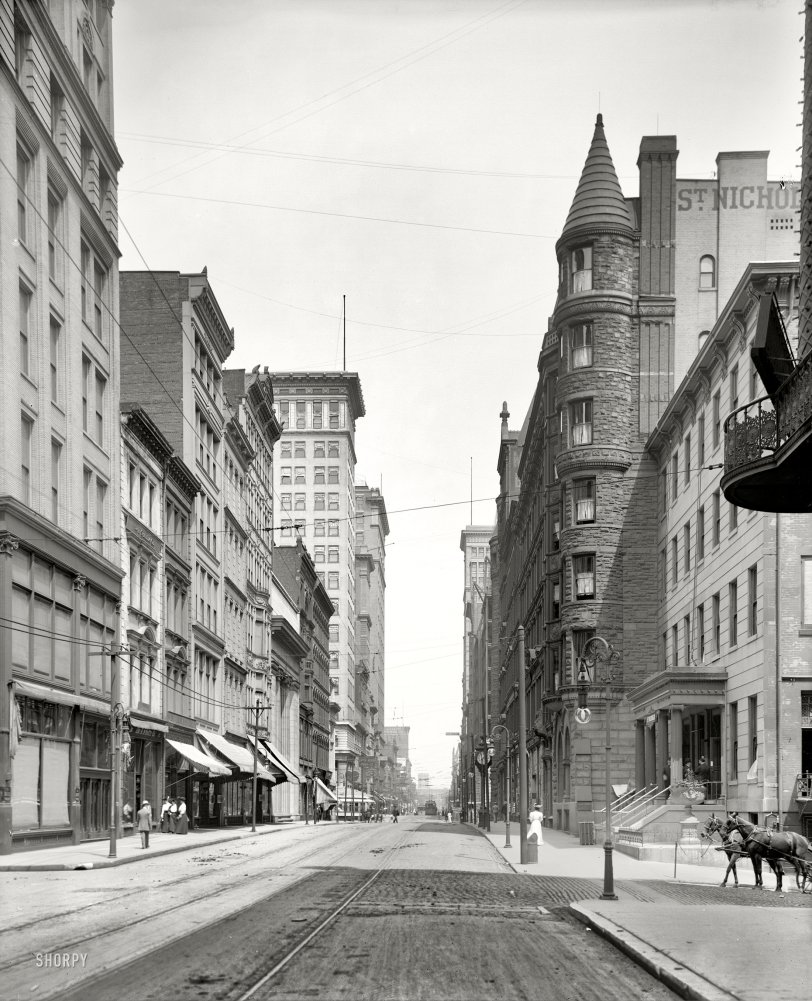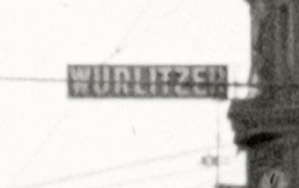


Framed or unframed, desk size to sofa size, printed by us in Arizona and Alabama since 2007. Explore now.
Shorpy is funded by you. Patreon contributors get an ad-free experience.
Learn more.

- Tough Guys
- Lost in Toyland
- And without gloves
- If I were a blindfolded time traveler
- Smoke Consumer Also Cooks
- Oh that stove!
- Possibly still there?
- What?!?
- $100 Reward
- Freeze Frame
- Texas Flyer wanted
- Just a Year Too Soon
- WWII -- Replacing men with women at the railroad crossing.
- Yes, Icing
- You kids drive me nuts!
- NOT An Easy Job
- I wonder
- Just add window boxes
- Icing Platform?
- Indiana Harbor Belt abides
- Freezing haze
- Corrections (for those who care)
- C&NW at Nelson
- Fallen Flags
- A dangerous job made worse
- Water Stop
- Passenger trains have right of way over freights?
- Coal
- Never ceases to amaze me.
- Still chuggin' (in model form)
Print Emporium
Wurlitzer: 1910

Cincinnati, Ohio, circa 1910. "Fourth Street east from Race Street." 8x10 inch dry plate glass negative, Detroit Publishing Company. View full size.
Span Wires & Feeders
I think that the coiled droppers are just interconnectors to equalise voltages in the "in" and "out" trolley wires -- there's no sign of any feeders coming up the traction poles.
As an edit I would note that there's no apparent connection between what might be the + and - feeder wires and the trolley wires themselves - I'm open to correction on this one...
The arrester coils are to limit current from lightning strikes - in another life I was involved in the reconstruction of a Glasgow tramcar and the arrester coil in it had come all the way from Keokuk, Iowa! There was also a spark gap to discharge the energy from a lightning strike to earth (ground in US parlance).
I'm not cognisant of the weather conditions in Cincinnati, but in the Central Belt of Scotland lightning strikes are not at all common.
Streetcar Span Wires
Wired's comments about the trolley span wire attached to the building is correct. All the other spans appear to be attached to steel support poles. The balcony overhang may have prevented the installation of a pole. On the left side of the photo you can see two very heavy "feeder" cables, which end at the second pole. If you look at the second and third spans you can see the feeder taps, where power from the positive and negative source is fed into the trolley wire from above. There are coiled sections of wire that drop down to achieve this. Most streetcar systems used a single positive trolley wire with a negative ground return through the tracks (DC current). What made Cincinnati interesting is that it was one of very few cities where the streetcars had two poles(one positive and the other negative), similar to electric trolley buses. The reason for this was to avoid stray return current that could corrode underground pipes.
I must be blind
But I don't see anything with the Rudolph Wurlitzer Co. name on it. Wurlitzer's original company headquarters was in Cincinnati, but the building burned in December 1904. Its replacement at 121 E. 4th Street wasn't completed until 1906.
Edit: Aha!

Ingalls Building
That tall building in the middle of the photo (left side of Fourth Street) is the Ingalls Building - the first reinforced concrete skyscraper in the world. It's still there. The stone structure on the right would be the Chamber of Commerce designed by H.H. Richardson. It burned down. Now the site of the PNC Tower (originally the Union Central Life building) designed by Cass Gilbert -- very similar to the Woolworth Building.
Wired
I hadn't noticed this in prior photos, but were the supporting cables for the street car lines attached to or anchored into buildings along the way? The really neat balcony at the far right seems to be supporting the overhead power line for the street cars. Or is the post it uses just outside of the frame.
A few are still standing
The tall building on the left with the awnings folded is still there and looks very similar, except the awnings have given way to modern air conditioning.
The building on the left with the stone facade and massive columns might still be there. However it appears to have been given a face lift and the magnificent columns are gone.
Most of the other buildings have been replaced with more modern styles.
I love the bay windows on the building on the right in the foreground.
























On Shorpy:
Today’s Top 5